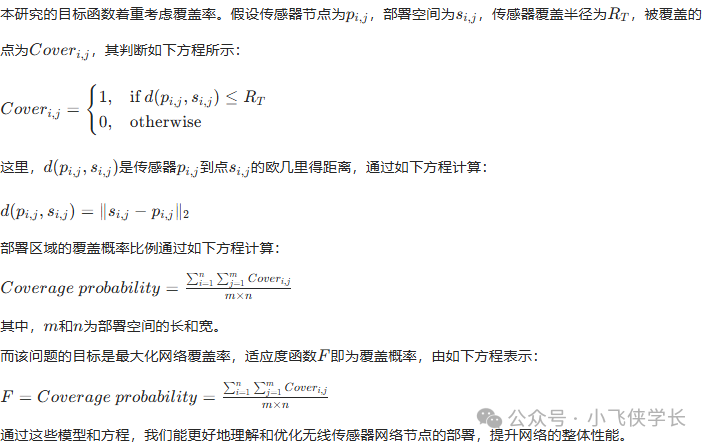In Wireless Sensor Networks (WSN), sensors rely on battery power, which is limited in usage time, making energy-saving and coverage protocols crucial. The node deployment model plays a key role in the efficient operation of the network, and today we will introduce the key points of this model.

1. Sensor Detection Model
The probability of event detection is inversely proportional to the Euclidean distance between the sensor and the event. There are two types of detection models in WSN. One is a binary detection model that assumes no uncertainty, while the other is a probability-aware model with random detection, which better reflects the actual performance of sensors. The binary detection model used in this article can be expressed by the following formula:


2. Model Testing
Here we test the model using PSO, GWO, and WOA algorithms, and the testing results are as follows:

From this, it can be seen that the model testing results are good, and the generated node deployment diagram is aesthetically pleasing, making it very suitable for inclusion in papers, which reviewers will appreciate.
Those who need it can download it themselves.
Personalized customization: optimization algorithm improvements and originality, optimization algorithm models, optimization algorithms combined with deep learning.
Private message V: huohuo7998
References: W. Wang and L. Lyu, “Adaptive Tasmanian Devil Optimizer for Global Optimization and Application in Wireless Sensor Network Deployment,” in IEEE Access, vol. 12, pp. 72382-72407, 2024, doi: 10.1109/ACCESS.2024.3403089.